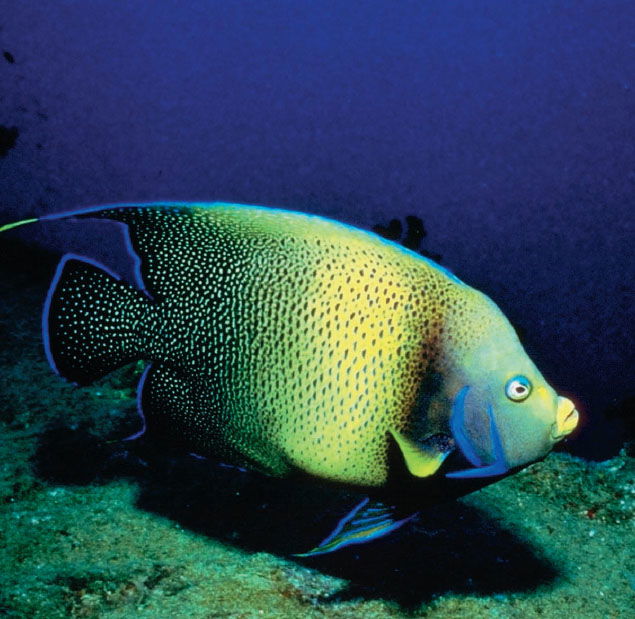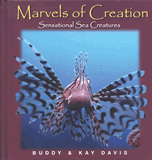Blue Angelfish
There are approximately 80 species of angelfish around the world. At one time it was thought that angelfish and butterfly fish were the same fish. However, there are differences. The most notable difference is the fact that most angelfish are larger than the butterfly fish with a larger spine. They are brightly colored with shades of blue, yellow, black, green, and red.
Angelfish get their name from their pectoral fins. They are located on the back and have a wing-like appearance. Angelfish have a compressed, narrow body shaped like a deep disk. They have scaly dorsal and anal fins. Angelfish are very graceful in their movements although they are very quick and active.
Angelfish are very popular in aquariums because of their shape and beautiful colors. There are some species of angelfish that live in fresh water, and some are marine ocean dwellers.
Angelfish have a very small mouth but it contains many small, crushing teeth. They feed on tiny barnacles, small crabs, and shellfish. They will go after bait that resembles crabs or shellfish, but are seldom caught. Angelfish are edible but they are not sought after as a food source.
Juveniles of some species of angelfish are different in color and pattern than the adults. Adults travel alone or in pairs. They are very territorial and warn other members of their species to stay away.
Blue Angelfish
Perciformes • Pomacanthidae
Holacanthus bermudensis
Length: 24 inches (60 cm)
Special Design Feature: The bright colors
of the angelfish warn other species to stay
away from their territory. Also, they are very
graceful and quick, enabling them to escape
predators and defend their home territory.
Did you know? Angelfish are the most
beautiful and highly colored fish of the reefs.

Marvels of Creation: Sensational Sea Creatures
Brings the world of the sea alive in a unique and colorful way with photographs, a page of facts and commentaries.
Browse Kids BookRecommended Resources
- © 2025 Answers in Genesis
- Privacy Policy
- Contact
- About


